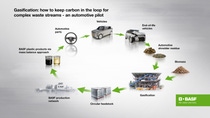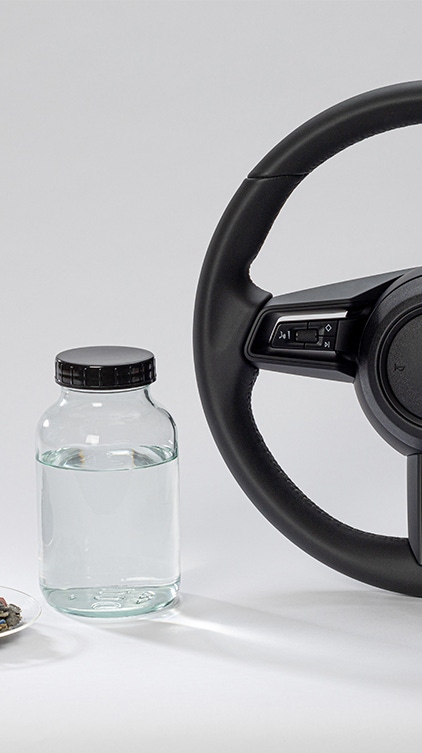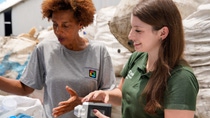Media
From trash to treasure
There are roughly 200 kilograms of plastics in a car, contributing to greater safety and making vehicles lighter and thus more fuel-efficient. However, when a car eventually ends up in the scrapyard, most of these plastics go unused. BASF wants to change that. Together with its partners – the research group BEST and car manufacturer Porsche – the company has developed a process for recycling mixed waste from end-of-life vehicles. In this interview, Wiebke Speckels, Sustainability Manager at BASF, explains how it works.
Ms Speckels, what happens to my car when it ends up in the scrapyard?
Most recyclers take little interest in plastics from end-of-life vehicles. At best, they remove larger parts like bumpers, which can already be recycled. However, the majority of the car is shredded to recover valuable metals, which make up the largest share of recycling by weight, while most plastics remain unused and are incinerated.
Why aren’t these plastics recycled?
A car contains up to 2,000 plastic parts, which are mostly combined with other materials such as paint, film or foam. This mix is so complex that it is considered non-recyclable. With our project, we wanted to show that it is indeed possible to return these plastics to the automotive cycle. We see great potential here: in Europe alone, around 5 million cars reach the end of their lives each year.
How does the new approach work?
In our pilot project, for the first time, a waste stream consisting only of automotive waste and biomass such as wood was recycled for plastic production using a gasification process. Gasification is a type of chemical recycling that breaks down plastics into their building blocks or converts them into basic chemicals. In the gasification process, mixed waste is converted into synthesis gas under high pressure, at high temperature, and with carefully controlled limited oxygen.
How do you use this synthesis gas?
The synthesis gas, or rather the synthetic crude oil produced in our project, replaces fossil raw materials in the BASF value chain. Synthesis gas forms the basis for many products, such as plastics. As part of the project, we used the chemically recycled gas to manufacture new steering wheels. Allocation is done through our mass balance approach. Our goal is to increase the share of recycled materials in our production in the future.
.jpg)
It's not primarily the way how we use plastics but it's the way how we treat them at the end of their life. We have to make sure that we have the right collection systems. That would be the key.
What challenges do you see?
It is still much cheaper to produce new plastics from crude oil than to use recycled materials, as the new technology is energy-intensive and complex. Without political regulations mandating a certain share of recycled plastics, there is little incentive for companies to invest in this demanding technology.
What potential does gasification have for other applications? Will we soon be gasifying our plastic bottles?
Gasification does not make sense if products such as PET bottles can be mechanically recycled – that is, if old bottles are turned back into new ones, which remains the gold standard. Instead, gasification is suitable for mixed waste streams for which no established recycling routes exist, such as automotive shredder residue or sorting remainders from packaging recycling. To meet recycling targets, different methods must complement one another.




